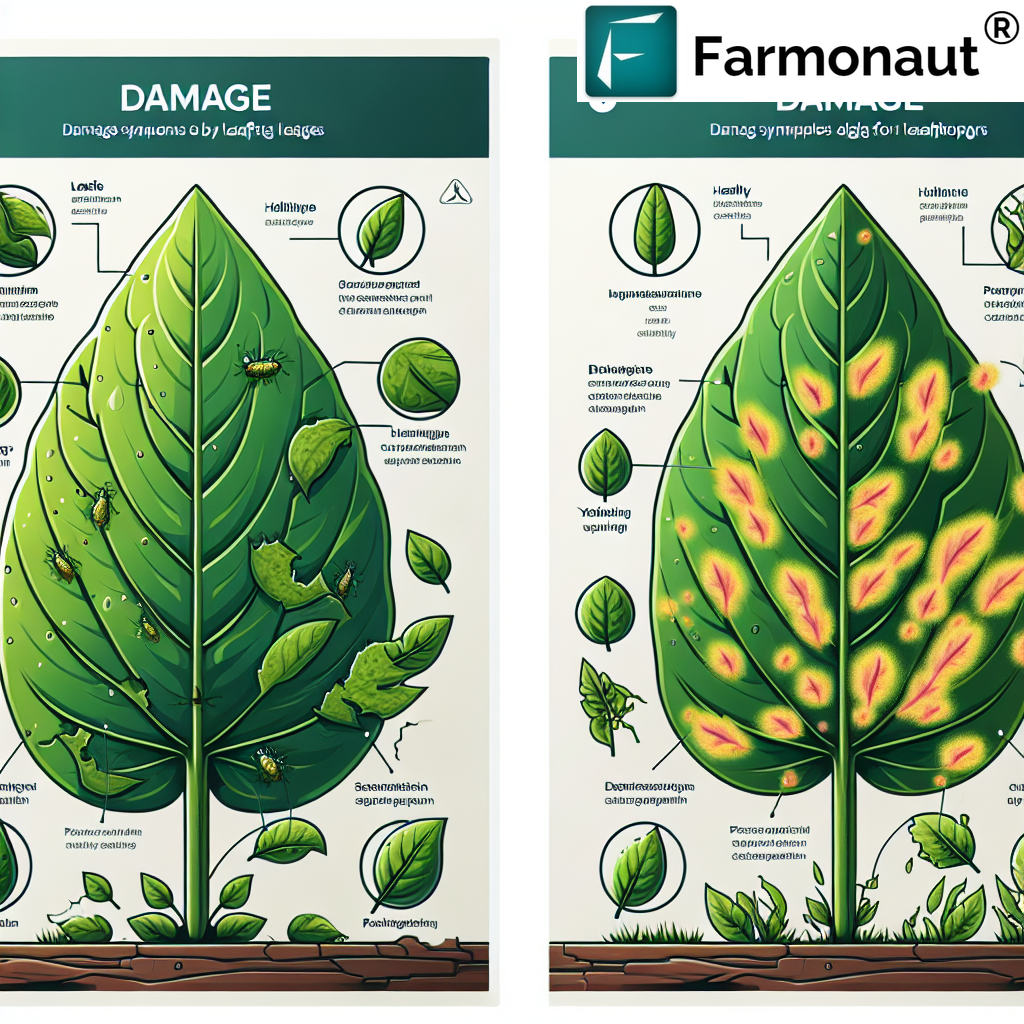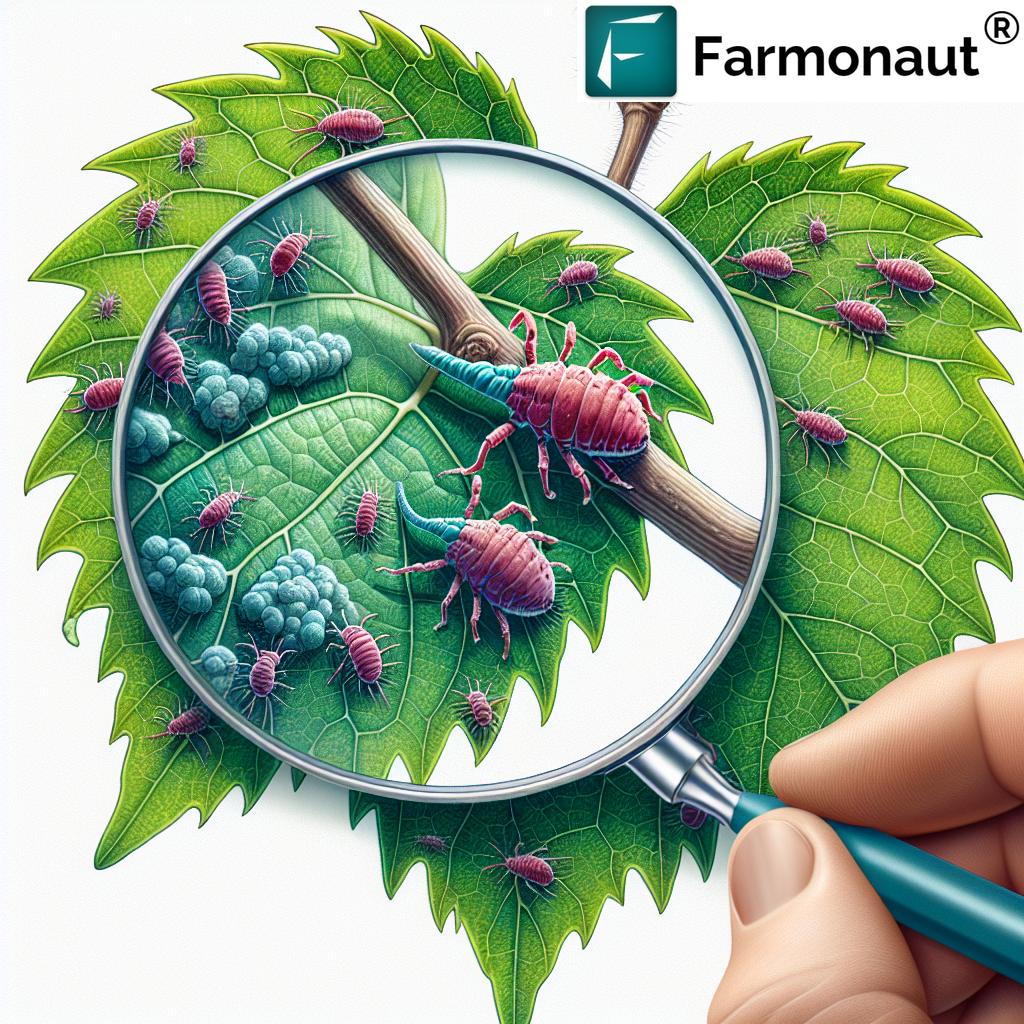Table of Contents
- Introduction: Best Smart Sprinkler System 2026 for Efficient Lawns
- How Smart Sprinkler Systems Are Revolutionizing Irrigation in 2026
- What Makes a Sprinkler System “Smart”?
- Key Benefits of the Best Smart Sprinkler Systems
- Comparison Table of 2026’s Leading Smart Sprinkler Systems
- Core Technologies Powering Smart Sprinkler Systems
- Smart Sprinkler Systems in Modern Agriculture Settings
- Major Advantages of Adopting Smart Sprinkler Systems in 2026
- Farmonaut: Advanced Satellite Solutions and Smart Irrigation Synergy
- Farmonaut: Seamless Remote Management for Irrigation
- Sustainability, Compliance, and Environmental Benefits
- How to Choose the Best Smart Sprinkler System in 2026: Step-by-Step
- Emerging Trends in Smart Sprinkler Systems: 2026 and Beyond
- Farmonaut Platform Integrations & Apps for Irrigation Management
- FAQs on Smart Sprinkler System for Efficient Lawns and Agriculture
- Conclusion: Efficient Irrigation in 2026 with Smart Technology
“Smart sprinkler systems can reduce water usage by up to 50% compared to traditional irrigation methods in 2025.”
Best Smart Sprinkler System 2026 for Efficient Lawns
Efficient irrigation has never been more critical in modern farming and landscaping. With climate variability, increasing water scarcity, and pressures to optimize every drop, the best smart sprinkler system is emerging as a transformative tool worldwide. In 2026, advancements in automation, data analytics, and IoT sensors are revolutionizing irrigation methods—significantly boosting crop yields, reducing water waste, and enabling farmers and property owners to manage their landscapes and fields with unprecedented efficiency.
In this comprehensive guide, we explore what makes a sprinkler system smart, the benefits of adoption, essential technologies, and how smart sprinkler systems reshape modern agriculture and lawn care. We’ll also show how satellite-driven data from Farmonaut synergizes with smart irrigation to unlock new levels of precision and sustainability in 2026.
How Smart Sprinkler Systems Are Revolutionizing Irrigation in 2026
Traditionally, sprinkler systems operated on fixed schedules, often applying water regardless of plant needs or prevailing weather conditions. This led to overwatering, increased runoff, and inefficient use of water resources—a challenge that intensified with expanding urbanization and changing climate patterns. But with the emergence of smart sprinklers, the sector is experiencing a paradigm shift in irrigation management:
- Data-Driven Precision: Smart sprinkler systems use sensors and cloud-based analytics to deliver water exactly when and where it’s needed.
- Dynamic Scheduling: By utilizing real-time weather forecasts and soil moisture sensors, they automatically adjust watering schedules to changing environmental conditions.
- Remote & Automated Control: With cloud connectivity, farmers and property owners can program and manage irrigation cycles remotely—using smartphones or computers from anywhere worldwide.
- Resource Conservation: Cutting-edge automation means water is never wasted; plants receive optimal hydration tailored to their growth stages, reducing total consumption and costs.
- Crop Yield & Lawn Health: When irrigation is managed efficiently, crops yield more, lawns look greener, and overall plant health improves—especially vital as water scarcity becomes the norm rather than the exception.
What Makes a Sprinkler System “Smart”?
At its core, a smart sprinkler system fundamentally differs from a standard system by dynamically managing water delivery through integrated sensors, AI-powered algorithms, and two-way connectivity.
- Integrated Sensors: Modern systems use soil moisture sensors, rainfall detectors, and climate analyzers to grasp environmental conditions in real time.
- Automation Controllers: Connected controllers, such as smart sprinkler timers, interface with cloud platforms to adjust or override irrigation cycles without manual intervention.
- Data Connectivity: Wireless (Wi-Fi, Bluetooth, or proprietary mesh networks) connections link the system with smartphones, computers, and weather modules for ongoing optimization.
- AI, Algorithms & Cloud Services: The best smart sprinkler solutions employ intelligent algorithms that learn from environmental patterns and crop/lawn responses to continuously refine watering strategies.
- Geo-Specific Adjustments: Some platforms leverage satellite data to interpret soil, humidity, and crop stress conditions with hyper-local accuracy.
The result? A system that prevents overwatering, minimizes wastage, and makes holistic, sustainable water management a reality for every user.
Key Benefits of the Best Smart Sprinkler Systems
- Water Savings: Automated responses to weather and soil moisture reduce usage by 30–50% over traditional irrigation methods.
- Enhanced Crop & Lawn Health: Proper hydration minimizes disease and stress, fostering stronger roots and higher quality yields for farmers and greener grass for homeowners.
- Lower Costs: Less water wastage translates to reduced bills, operational costs, and labor inputs due to full automation.
- Remote Monitoring & Management: Get instant status notifications on valve failures, leaks, or system irregularities from anywhere via smart devices.
- Compliance & Data Reporting: Easily generate irrigation logs and reports for regulatory and certification requirements, supporting sustainability certifications.
Comparison Table of 2026’s Leading Smart Sprinkler Systems
| Brand/Model | Estimated Water Savings (%) | Automation Features | Connectivity | Compatibility | Coverage Area (sq. meters) | Estimated Cost (USD) | Year of Release |
|---|---|---|---|---|---|---|---|
| RainTek Pro 3600 | 47% | Rain/soil sensors, Auto seasonal adjust | Wi-Fi, Bluetooth | iOS/Android Apps, Smart Home | 2,000 | $390–520 | 2026 |
| EcoFlow AquaSense 2026 | 53% | AI pattern analysis, Weather API integration | Wi-Fi, Cloud | Web, Mobile, Home Assistants | 2,900 | $510–610 | 2026 |
| GreenPulse Infinity X | 49% | Solar/Weather/Soil, Leak detection | Wi-Fi, 5G/LTE Mesh | iOS/Android, IoT Hubs | 5,000 | $700–820 | 2026 |
| AquaZone Smart LX | 45% | App control, Rain skip, Custom zones | Bluetooth, Wi-Fi | Android/iOS, Alexa/Google Home | 1,500 | $320–390 | 2026 |
| RainLogic SmartEdge | 51% | Multi-crop presets, Satellite input | Bluetooth, Cloud API | All Mobile, Web App | 3,200 | $460–520 | 2026 |
*All values are estimated for 2026; actual coverage and pricing may vary by region and model.
“Automated smart irrigation improved crop yields by nearly 30% on monitored farms using advanced technology in 2026.”
Core Technologies Powering Smart Sprinkler Systems
- IoT-Enabled Sensors: Measure soil moisture, rainfall, temperature, and sunlight exposure in real time for precise data.
- Weather Data Analytics: Systems harness hyper-local weather forecasts to optimize or delay watering schedules—ensuring irrigation never occurs before, during, or after rain.
- Automated Controls: Smart sprinkler timers serve as central components that automate cycles, connect to cloud platforms, and “learn” from historic watering and plant responses.
- AI and Machine Learning Algorithms: The latest sprinkler system smart models employ AI to detect patterns in soil and crop behavior—continuously refining irrigation strategies and boosting ROI.
- Solar Power & Low-Energy Protocols: Advancements in solar panels and communication (e.g., LoRa, LPWAN) make these systems viable for even the most remote farm locations.
- Modular Design: Units can be expanded as needed, and smart sprinkler system modules integrate with nutrient management, large-scale farm management apps, and other automation platforms.
Smart Sprinkler Systems in Modern Agriculture Settings
Smart irrigation is not just revolutionizing home lawns. Let’s look at how the smart sprinkler system is being adopted across core agricultural and allied sectors:
Urban and Suburban Smart Lawn Sprinkler Applications
- Consistent Lawn Hydration: Perfect for landscaping, smart lawn sprinkler systems guarantee uniform watering across green spaces, parks, and sports complexes, adapting quickly to shifts in weather or usage.
- Mobile & Voice Control: Integration with smart home platforms and mobile apps gives urban users remote, simple, and granular control, even on the go.
- Reduced Runoff: In areas with strict water restrictions or poor drainage, advanced timers and sensors prevent overwatering and runoff—a vital feature during heavy rainfall.
Large-Scale Farming and Orchard Smart Irrigation
- Precision Farming: High-value crops (like berries, wines, tree nuts) thrive when smart sprinkler timers maintain uniform soil moisture—critical for both yield and quality.
- Remote Zones Management: Farmers can manage and adjust watering zones instantly across expansive fields without costly field visits (fleet management systems also optimize route planning for in-person checks).
- Responsive to Crop Stages: Adjusting hydration to match seedling, vegetative, flowering, or fruiting stages maximizes growth and prevents stress.
- Integration with Satellite: Data from services like Farmonaut further improve zone mapping and real-time monitoring—see more below.
Forestry and Reforestation Using Smart Sprinklers
- Precision Forestry: In reforestation projects or nurseries, smart sprinkler systems deliver just the right amount of water at scheduled intervals for different tree species and soil types.
- Survival Rate Improvement: Maintaining optimum moisture, even through exceptional rainfall variability, helps seedlings establish and accelerates forest regeneration.
- Integration with Environmental Monitoring: Use Farmonaut’s real-time carbon footprint tracking to accurately monitor the environmental benefits of afforestation and irrigation changes.
Major Advantages of Adopting Smart Sprinkler Systems in 2026
- Dynamic Responsiveness: Systems respond quickly to sudden changes—like unexpected rainfall or heatwaves—by remotely overriding irrigation cycles and preventing unnecessary water use.
- AI-Powered Learning: Devices learn from patterns in weather and plant responses, continually refining their irrigation strategy to enhance yields and conserve water.
-
Seamless Remote Management: Whether you’re farming in India, Africa, or Europe, smart platforms allow global access and quick action from anywhere, using Farmonaut’s web and mobile apps:



- Data, Traceability & Compliance: Use Farmonaut’s blockchain traceability tools to document irrigation methods, water use, fertilizer applications, and supply chain activities for robust sustainability audits.
- Insurance & Financing: Satellite and sensor data can verify irrigation-related crop health for crop loans and insurance, lowering risk for both farmers and lenders.
Farmonaut: Advanced Satellite Solutions and Smart Irrigation Synergy
As an innovator in satellite-based analytics, Farmonaut integrates real-time satellite imagery, AI advisory systems, and cloud-based reporting to support precision irrigation in farming and beyond. Here’s how our data-driven platforms complement the best smart sprinkler system in the field:
- Vegetation Health Monitoring (NDVI/NDWI): Satellite mapping pinpoints zones with moisture stress or overwatering—enabling targeted smart sprinkler zoning.
- Climate Risk Forecasting: Our Jeevn AI gives actionable weather and crop-specific irrigation recommendations, so farming operations can fine-tune sprinkler timers for maximum effect.
- Environmental Impact: We offer real-time environmental impact monitoring, including carbon footprinting, to help users measure, manage, and minimize the ecological impact of irrigation and water management methods.
- Accessible Worldwide: Our data and services are designed for all—individual farmers, estate managers, corporations, and governments—accessible via Android, iOS, web, and robust API (Full API Access & API Docs).
- Resource & Fleet Optimization: Advanced analytics help manage agricultural fleets, optimizing machine use and supporting in-field validation of smart sprinkler operation.
Farmonaut: Seamless Remote Management for Irrigation
One of the most significant benefits of smart sprinkler systems is their ability to be managed remotely. Whether adjusting irrigation schedules during heatwaves or pausing watering when surprise rainfall is detected, Farmonaut’s platform offers essential capabilities:
- Real-Time Notifications: Users receive immediate alerts for abnormal moisture readings, valve failures, or system faults.
- Custom Irrigation Cycles: Easily program daily/weekly/monthly cycles tailored to regional weather patterns and crop growth stages.
- Automated System Integrations: The large-scale farm management app connects field inputs, irrigation logs, and compliance reports—offering a holistic overview.
- Data Visualization: Easy-to-understand dashboards help monitor trends, compare fields, and measure results over time.
Sustainability, Compliance, and Environmental Benefits
- Lower Carbon Footprint: Precision irrigation reduces both direct water waste and the carbon emissions associated with pumping and distributing water. Track and manage your footprint.
- Water Resource Conservation: Minimized leaks and overwatering protect aquifers and surface water—an urgent priority as water scarcity intensifies.
- Regulatory Compliance: Easily generate reports or proof of sustainable practices using Farmonaut-enabled traceability and data gathering tools for certifications and audits.
- Environmental Reporting for Forestry/Agribusiness: Real-time environmental impact tracking (“How much water/energy did our forestation actually save?”) is accessible for managers, governments, and NGOs.
How to Choose the Best Smart Sprinkler System in 2026: Step-by-Step
- Define Coverage Needs: Determine your area (in sq. meters) and zoning requirements for your lawn, farm, or plantation.
- Prioritize Water Savings: Look for systems that clearly state their average water savings (aim for 45%+ over traditional methods).
- Consider Automation Features: Essential features in 2026 include soil moisture, rainfall, weather prediction, and AI pattern recognition.
- Check Connectivity: Decide if you require Wi-Fi, Bluetooth, or low-energy mesh protocols (rural farms may prefer solar/battery options).
- Compatibility Is Critical: Ensure the system supports mobile app control, cloud-based scheduling, and integrates with any existing farm management platform.
- Evaluate Cost vs. Features: Don’t overpay for more than you need—bulkier systems serve large operations; basic setups are perfect for small lots and gardens.
- Look for Data Integration: The best systems in 2026 offer open API access or ready connectivity with leading platforms (Farmonaut API, etc.), seamlessly integrating satellite, weather, and traceability data.
- Assess Regulatory and Sustainability Compliance: If you need to meet local/global conservation standards, prioritize systems that can generate reports or export data logs.
Emerging Trends in Smart Sprinkler Systems: 2026 and Beyond
- Rapid AI & Machine Vision Expansion: Next-gen sprinkler systems smart use drone and camera feeds to detect plant health issues and adjust watering on the spot.
- Increased Sensor Fusion: Data from satellites, IoT endpoints, and ground sensors are integrated to offer the most precise, holistic irrigation management solutions ever.
- Plug-and-Play Modules: As farms expand or needs change, users simply add more zones or upgrade system modules—maximizing long-term ROI.
- Sustainable, Solar-Powered Options: Off-grid setups will become universally available, decreasing infrastructure costs and expanding access to smart irrigation in developing regions.
- Automated Regulatory Compliance: Tracking and reporting tools will be even more robust, making sustainable agriculture and forestry easier to achieve—and prove.
Farmonaut Platform Integrations & Apps for Irrigation Management
- Farmonaut Web & Mobile Apps – For real-time irrigation management, satellite crop monitoring, and environmental auditing.
- Large-Scale Farm Management – Designed for teams managing expansive fields or multi-site farms—we provide centralized coordination of irrigation, fertilization, and activity records.
- Blockchain-Based Product Traceability – Ensures transparency in documenting irrigation and water use for export, certification, or logistics partners.
- Fleet Management Integrations – Optimize machinery resource allocation for in-person checks, repairs, or manual irrigation supplementation.
- Carbon Footprinting Extension – Quantify and reduce the emissions related to irrigation and machinery operation.
- Crop Loan & Insurance Verification – Use our satellite and analytics data as supporting documents for agricultural financing.
All services are accessible via our unified app interface—making data-driven, sustainable, and efficient irrigation management scalable from smallholder plots to large commercial farms worldwide.
FAQs on Smart Sprinkler System for Efficient Lawns and Agriculture
What is a smart sprinkler system and how is it better than a traditional system?
A smart sprinkler system utilizes sensors, weather data, and intelligent automation to deliver the right amount of water only when needed, reducing waste. Its automation, remote control, and data integration capabilities significantly surpass those of traditional fixed-schedule systems—improving efficiency and sustainability.
How much water can I save with a smart sprinkler system in 2026?
The best smart sprinkler systems can reduce water usage by 45–53%, depending on area, crop/lawn type, climate, and additional management tools. Savings are greatest when paired with soil moisture sensors and weather data analytics.
Can smart sprinkler timers be controlled remotely?
Yes. Modern smart sprinkler timers are designed for wireless or cloud-based remote management via smartphones, computers, and smart home assistants. This means you can adjust, pause, or monitor your irrigation system from anywhere worldwide.
Are smart sprinkler systems suitable for large-scale agriculture and forestry?
Absolutely. Scaled-up versions are engineered for expansive fields and forestry. Their modular design, advanced scheduling, and integration with platforms like Farmonaut’s enable large-scale, uniform, and adaptive irrigation across diverse zones.
How do I choose between different smart sprinkler brands and models?
Compare estimated water savings, automation features (sensors, weather integration), connectivity options, compatibility with apps or smart systems, coverage area, and cost. Ensure the chosen system can integrate with your other tools and generate documentation for regulatory or sustainability needs.
Conclusion: Efficient Irrigation in 2026 with Smart Technology
The smart sprinkler system is not just an evolutionary leap—it’s a revolution in water management for lawns and agriculture worldwide. Through automation, AI-driven analytics, sensor data, and satellite-enabled precision from providers like Farmonaut, these systems optimize water use, minimize manual labor, and enhance crop and landscape health. As climate variability and water scarcity pressures continue to mount, embracing the best smart sprinkler technology is imperative for efficient, sustainable, and resilient farming and landscaping—now and in the years ahead.
Whether you’re a farmer, estate manager, or homeowner, adopting a smart sprinkler system in 2026 provides the tools, insights, and efficiency needed for today’s challenges and tomorrow’s opportunities in precision irrigation.
Explore Farmonaut’s data-driven solutions for satellite monitoring, real-time advisory, compliance, and remote irrigation management—putting efficient water use and sustainable growth within reach, for everyone, everywhere.
Ready to future-proof your irrigation management? Access Farmonaut on web, Android, and iOS, or explore full API support and documentation:
Keywords incorporated: smart sprinkler, best smart sprinkler, sprinkler system smart, smart sprinkler system, smart lawn sprinkler, smart sprinkler timer, smart, sprinkler, water, irrigation, systems, farmers, management, crop, sprinklers, soil, agricultural, agriculture, system, precise, farming, weather, data, best, moisture, farm, 2025, technology, worldwide, adoption, methods, critical, challenge, modern, climate, optimize, solutions, automated, sustainable, sensors, traditional, schedules, watering, plants, optimal, growth, timers, remotely, rainfall, preventing, algorithms, environmental, promoting, reduce, use, automation, advancements, continue, revolutionize, practices, significantly, transforming, efficient, remains, variability, scarcity, pressure, every, drop, among, innovative, emerges, vital, tool, offering, enhances, yields, conserves, supports, integrates, analytics, controls, deliver, exactly, needed, unlike, often, operate, fixed, utilize, forecasts, adjust, dynamically, responsiveness, reduces, overwatering, minimizes, runoff, ensures, receive, hydration, tailored, stages, settings, central, components, connect, cloud, platforms, allowing, program, cycles, via, smartphones, computers, convenience, managing, means, respond, quickly, sudden, changes, heatwaves, unnecessary, associated, wastage, additionally, many, devices, come, equipped, learn, patterns, responses, continuously, refining, strategies, maximize, productivity, lawn, traditionally, seen, urban, suburban, landscaping, gain, relevance, versions, designed, expansive, fields, control, helps, maintain, uniform, activities.










